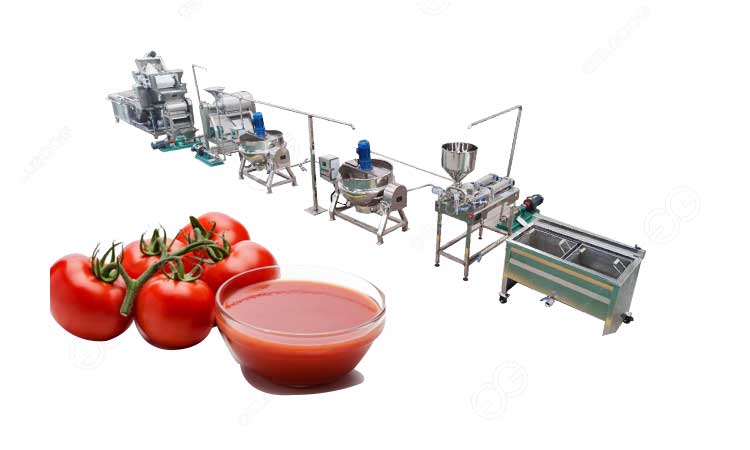What Equipment Is Used to Make Tomato Sauce?
Tomato sauce is a main seasoning in kitchens around the world, used in a wide range of culinary applications. While many people are familiar with making tomato sauce at home, the production of tomato sauce on an industrial scale involves a complex and sophisticated process that relies on a variety of specialized equipment. In this article, we will take a closer look at what equipment is used to make tomato sauce.

1. Sorting and washing equipment
The first step in tomato sauce production is selecting high-quality tomatoes. Factories use sorting machines to separate ripe, unripe, and damaged tomatoes. These machines use various sensors and cameras to assess the tomatoes' color, size, and overall condition. Once sorted, the tomatoes are thoroughly washed to remove dirt, debris, and any residual pesticides.
2. Conveyor belts
Conveyor belts are an essential component of tomato sauce production line. They transport the washed tomatoes from one stage of the process to the next. Conveyor belts can be customized to accommodate different sizes and shapes of tomatoes, ensuring a smooth and efficient flow of produce through the factory.
3. Blanching and peeling equipment
To remove the tomato skins, the tomatoes are blanched in hot water and then rapidly cooled. Specialized blanching equipment precisely controls the temperature and timing of this process. After blanching, the tomatoes are passed through a peeling machine that gently removes the skins, leaving the pulp intact.
4. Crushing and grinding machines
Once peeled, the tomatoes are crushed and ground into a pulp. Large crushers and grinders, often referred to as "Pulping machines," Are used for this purpose. These machines break down the tomatoes into a consistent texture while separating seeds and other unwanted materials.
5. Heating and cooking vats
The tomato pulp is then transferred to large heating and cooking vats. These vats are designed to evenly distribute heat and maintain precise cooking temperatures. During this stage, seasonings, herbs, and other flavorings are added to create the desired taste profile for the tomato sauce. The cooking process also helps to thicken the sauce.
6. Vacuum evaporators
To achieve the desired consistency and thickness, excess water is removed from the tomato sauce. Vacuum evaporators are used to evaporate water from the sauce while preserving its flavor and nutritional properties. This equipment operates under reduced pressure, allowing for lower cooking temperatures and reduced cooking times.
7. Sterilization and canning machines
After the tomato sauce reaches the desired consistency and flavor, it is sterilized to ensure product safety and shelf stability. Sterilization equipment uses heat to kill harmful microorganisms while maintaining the sauce's quality. The sauce is then filled into cans, jars, or other containers using automated filling machines. Lids or caps are sealed onto the containers to prevent contamination.
8. Labeling and packaging lines
Once the tomato sauce containers are filled and sealed, they are labeled, coded, and packaged for distribution. Labeling machines apply product labels, and packaging equipment arranges the containers into boxes or other packaging materials for shipment.
9. Quality control and inspection systems
Throughout the production process, quality control and inspection systems play a critical role in ensuring the final product meets high standards. These systems use sensors, cameras, and other technologies to detect defects, inconsistencies, or contaminants in the tomato sauce.
The production of tomato sauce in a factory involves a well-orchestrated dance of specialized equipment designed to handle large quantities of tomatoes efficiently and hygienically. This behind-the-scenes look at the equipment used in tomato sauce production demonstrates the precision and care that goes into creating a staple of global cuisine.
